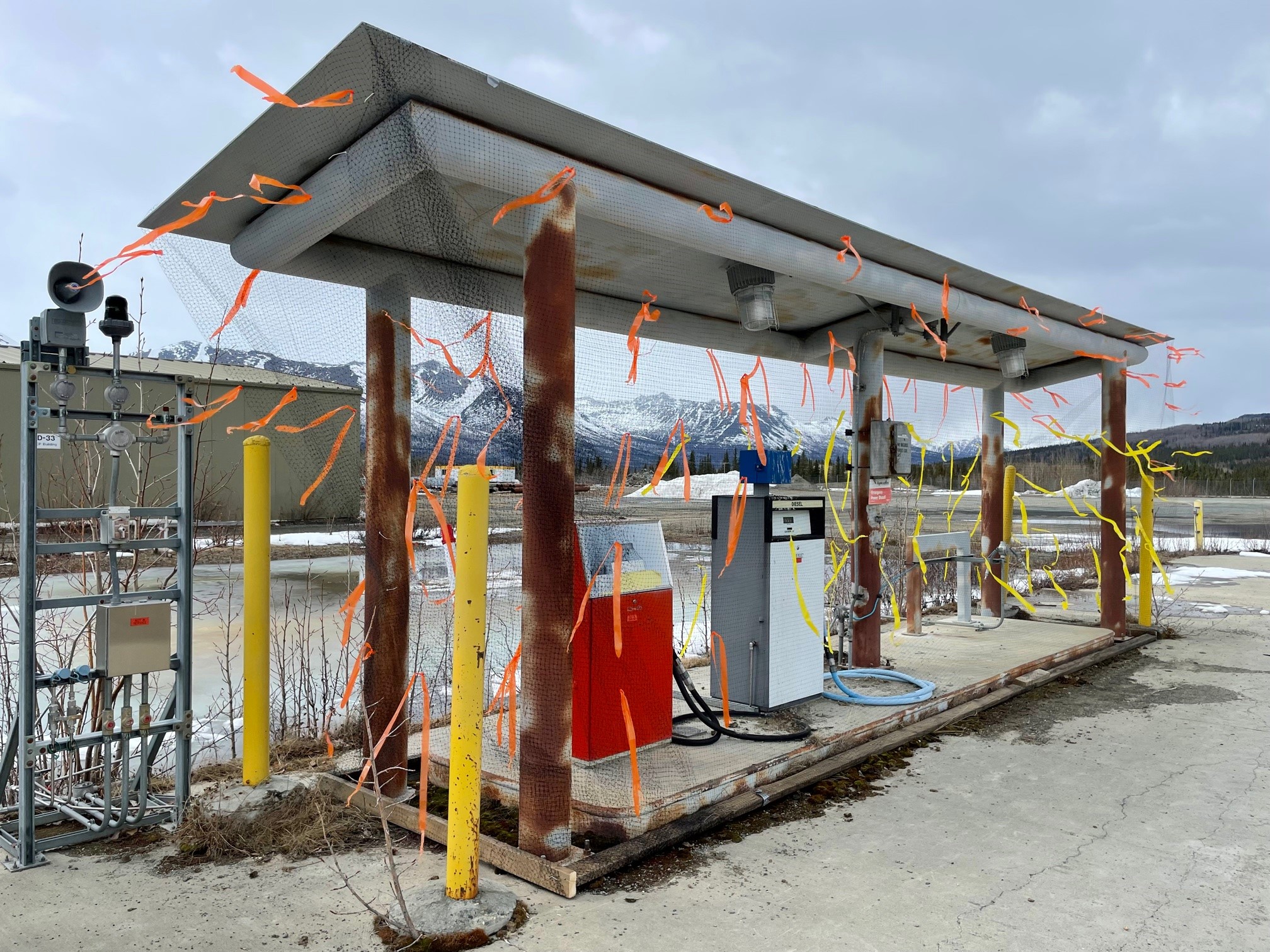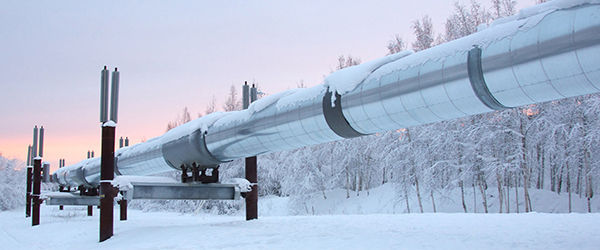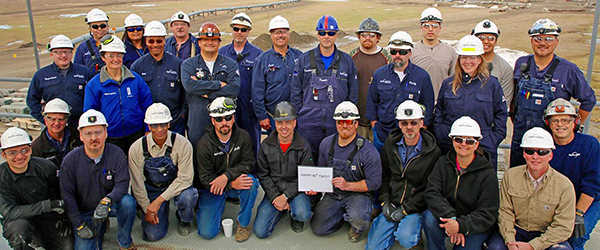Environment: Pump Station 12 Facility Removal’s Bird Deterrent & Relocation
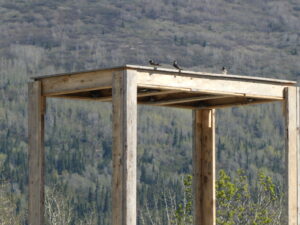 Set alongside the Richardson Highway and Little Tonsina River, about 65 pipeline miles from the Valdez Marine Terminal, Pump Station 12 hasn’t been in use for many years – by TAPS workers, that is. The area’s birds, however, seized on the peaceful setting, as mud swallows, ravens, owls and other frequent flyers returned each summer for nesting season.
Set alongside the Richardson Highway and Little Tonsina River, about 65 pipeline miles from the Valdez Marine Terminal, Pump Station 12 hasn’t been in use for many years – by TAPS workers, that is. The area’s birds, however, seized on the peaceful setting, as mud swallows, ravens, owls and other frequent flyers returned each summer for nesting season.
Summer is also prime project season for TAPS teams tasked with PS12 demolition efforts: workers planned to start with cleaning the facility in 2022, setting up the 2023 demo work. Federal law prohibits the removal of active bird nests, so workers needed to delicately navigate how to prevent impacts to birds while avoiding project delays.
The solution: building alternative bird nesting structures nearby, and using a variety of methods to safely keep the birds away from aging pump station infrastructure and future demolition spaces. The creative, proactive protection methods for coexisting with wildlife on TAPS earned the project group the 2023 Atigun Award for Environment.
“Preventing unnecessary impacts to wildlife has long been an important part of how TAPS has operated since its beginning,” said Ken Wilson, Alyeska Fish & Wildlife SME. “However, in the past, addressing wildlife impacts has mostly been done reactively rather than proactively. This project clearly demonstrated a better way.”
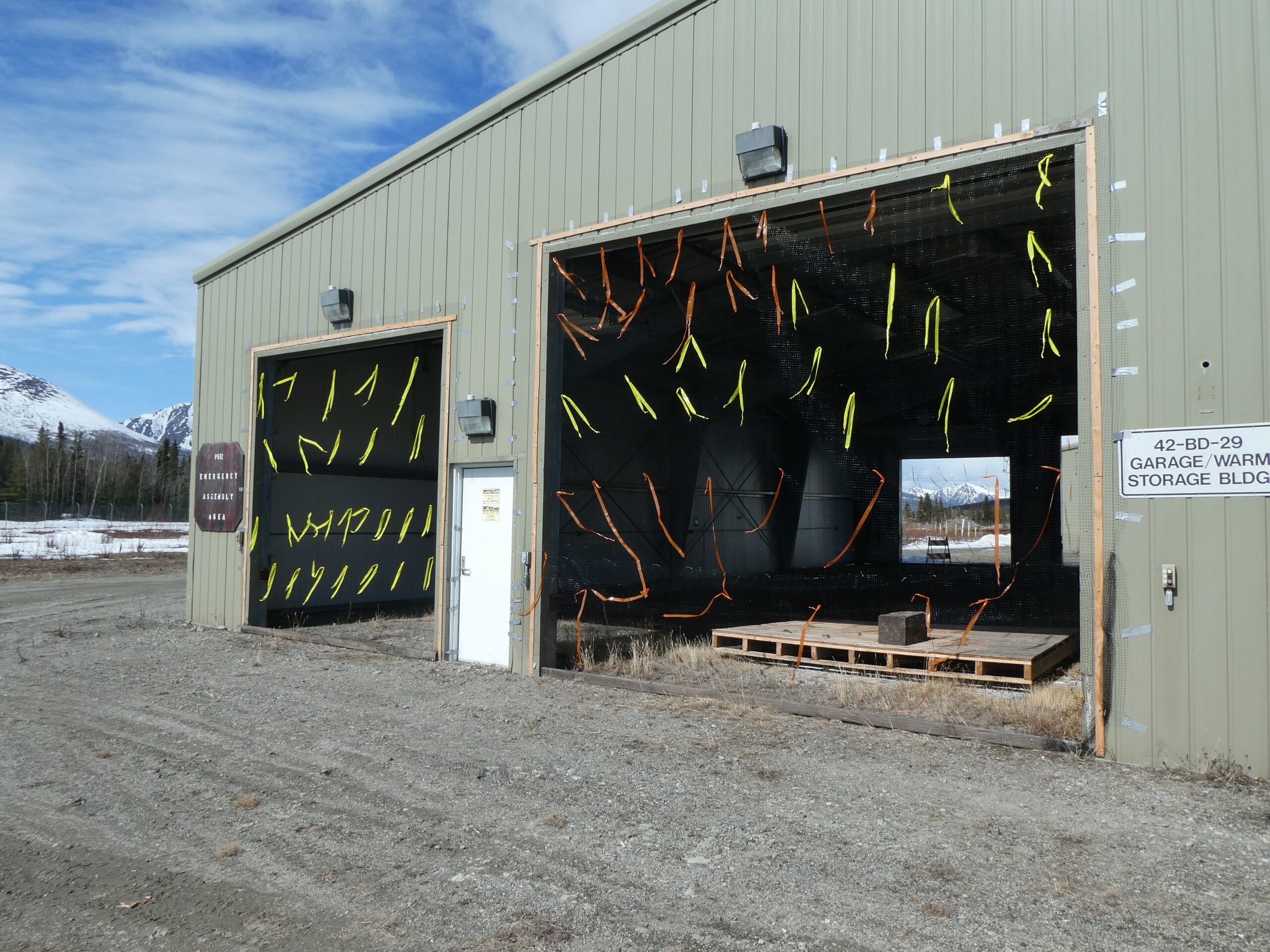
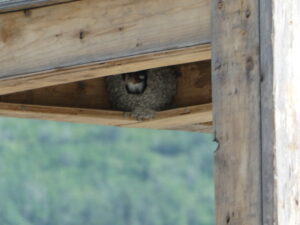 Team members monitored bird activity and nesting preferences in 2021 to better understand their habits, routines, and more. Alyeska Environmental team members also sought expertise from the USDA Wildlife Services, an agency with wildlife deterrence expertise and history of similar work. And they incorporated years of lessons learned from bird deterrence at the Valdez Marine Terminal and the Glennallen Response Base, and from the Pump Station 10 demolition project a few years ago.
Team members monitored bird activity and nesting preferences in 2021 to better understand their habits, routines, and more. Alyeska Environmental team members also sought expertise from the USDA Wildlife Services, an agency with wildlife deterrence expertise and history of similar work. And they incorporated years of lessons learned from bird deterrence at the Valdez Marine Terminal and the Glennallen Response Base, and from the Pump Station 10 demolition project a few years ago.
“This was the year to develop alternative nesting sites and to train the birds to use them,” said Ken.
Ultimately, a number of bird deterrents were instituted and installed. The team built and placed artificial wooden nesting platforms around the area. They also modified infrastructure that birds previously frequented, like structure coverings and overhangs; set up netting and streamers at the abandoned warehouse and living quarters entries to prevent entry; and used a bird deterrent called Bird-X Bird Stop, a grape seed extract of methyl anthranilate based on taste aversion. The product was applied throughout the facility where previous nests were identified. PS12 was the first time the product was used on TAPS, which required the Material Request and Approval submission. Now that it’s approved in Alyeska’s system, it can be used at other locations.
“I’m not sure of the birds got to taste the product, but it made PS12 smell like grape juice for the summer,” said Mark Nelson, Implementation Assurance Lead.
 Then there were the six temporary small wooden nesting structures, placed to provide swallows something to construct nests on. They were designed to mimic the fuel island covers that were preferred nesting locations. At first, the birds didn’t take to the alternatives, so the team moved the new nesting complexes closer to the original nesting sites and even created artificial mud puddles for easy access to nest building material.
Then there were the six temporary small wooden nesting structures, placed to provide swallows something to construct nests on. They were designed to mimic the fuel island covers that were preferred nesting locations. At first, the birds didn’t take to the alternatives, so the team moved the new nesting complexes closer to the original nesting sites and even created artificial mud puddles for easy access to nest building material.
The birds then flocked to the new locations and crafted mud nests. Adjustments were made throughout the nesting season to produce favorable results.
“The swallows stopped trying to use buildings and successful used the artificial nest platforms instead, and as a result, they successfully raised their young of the year in mud nests at these platforms,” Ken added.
With the birds taken care of, the facilities were primed for future demolition: cleaning below-ground piping, selected above-grade systems, and main line injection, and removal of hazardous waste material. When the 2022 work wrapped, and with the birds gone following nesting season, the platforms were stored with the mud nests still intact. They will be reinstalled this summer, so the demolition can proceed while the birds return to their new nesting areas.
“Because the birds have already created nests on these platforms, they will be ready for use in 2023 and we expect the project schedule to proceed with no impacts,” Wilson concluded.
Alyeska is committed to decommission and demolition of unused infrastructure. It reduces footprint, improves the area’s natural landscapes, consolidates Alyeska’s assets, reduces monitoring, operations and maintenance work, and decreases associated risk and long-term liability. This kind of wildlife protection work in tandem with demolition projects strengthens Alyeska’s reputation with agencies and stakeholders.
Congratulations on the Atigun Award for Environment to Alyeska’s Cathy Girard, Mike Knabe, Caitlin Bergin, Anne Beesley, Ken Wilson, Mark Nelson, Joe Buck, Don Seiber, Tony Stallone, Jim Burzinski, and CCI Industrial Services LLC, the contractor that implemented the bird deterrent strategy.
